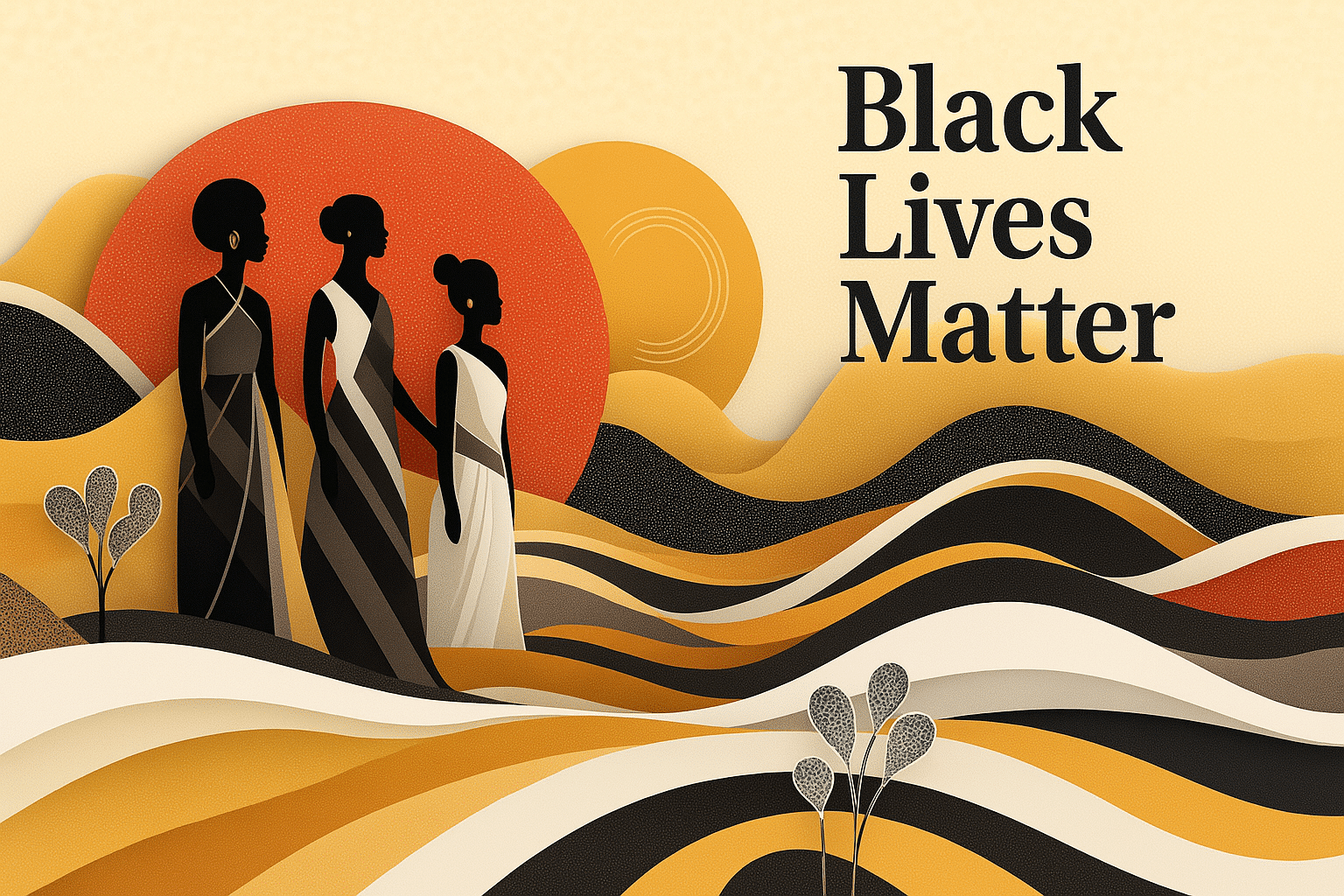What is Black Lives Matter Month?
Black Lives Matter Month is observed every year in June in the United States. It is a time to reflect on the fight for racial justice, amplify Black voices, and take action against systemic racism. This month goes beyond awareness. It encourages direct engagement with the lived realities of Black communities and supports efforts for long-term change.
While February’s Black History Month focuses on past achievements, Black Lives Matter Month emphasizes the present. It brings attention to police violence, economic inequality, and healthcare gaps, while also celebrating creativity, leadership, and resilience. The month is about recognizing injustice and uplifting movements that demand fairness and dignity for all.
History and Origin
The Black Lives Matter movement began in 2013 after the acquittal of George Zimmerman in the killing of Trayvon Martin, a 17-year-old Black boy who was unarmed. In response, Alicia Garza posted a message on social media: “Black people. I love you. I love us. Our lives matter.” Patrisse Cullors added the phrase “Black Lives Matter” with a hashtag. Together with Opal Tometi, they launched what would become one of the most visible movements of this generation.
In 2014, the deaths of Michael Brown in Ferguson and Eric Garner in New York led to national protests. These events pushed the movement into the public eye. Demonstrations spread across the country as people demanded accountability and change in law enforcement and beyond.
The observance of Black Lives Matter Month began in the years that followed. Many communities wanted a moment in the year to pause, reflect, and organize. June was chosen because of its connection to key protests, as well as Juneteenth, a historic date that marks the end of slavery in the United States. Together, these moments link past and present struggles for equality.
Who participates in Black Lives Matter Month?
- Activists and community leaders: Organize protests, town halls, and justice campaigns.
- Schools and universities: Host events that focus on race, power, and social equity.
- Artists and creators: Use music, film, photography, and writing to challenge injustice.
- Faith-based organizations: Create spaces for healing, dialogue, and reflection.
- Local communities: Attend rallies, read together, or raise funds for racial justice.
Slogans and Themes
Slogans like “Black Lives Matter,” “Say Their Names,” and “No Justice, No Peace” are powerful because they express both grief and resistance. The message is simple but urgent. Black lives are valuable, and ignoring their suffering is no longer an option.
Themes during June often focus on justice, healing, and joy. Organizers spotlight youth leadership, mental health, environmental justice, and the experiences of Black LGBTQ+ communities. Each year adds new stories, voices, and calls for change.
Colors, Symbols, and Patterns
Colors
- Black: Stands for strength, presence, and pride.
- Red: Represents struggle and the urgency of the fight for justice.
- Green: Symbolizes hope, community, and a future grounded in freedom.
Symbols
- Raised fist: Seen in murals, flags, and artwork as a sign of unity and power.
- Portraits of victims: Remember those who were lost to violence or neglect.
- March signs and slogans: Serve as tools for protest and education.
Patterns
- Memorial displays: Include candles, flowers, and art installations.
- Street murals: Turn city pavement into messages of love and resistance.
- Digital art: Shares information and emotion through infographics, posters, and video.
Most Used Hashtags
- #BlackLivesMatter
- #BLM
- #SayTheirNames
- #JusticeForGeorgeFloyd
- #EndRacism
How do you celebrate Black Lives Matter Month?
- Attend a local protest: Join others in the streets or at events that promote justice.
- Support Black-owned businesses: Make intentional purchases that help close economic gaps.
- Read and watch: Learn more through books, films, and talks about racial injustice and history.
- Give to grassroots groups: Support organizations that fight for civil rights and protect communities.
- Speak out: Use your voice and platforms to challenge racism where you see it.
Why is Black Lives Matter Month important?
This month is essential because it reminds people that racism is not just a past issue. It continues to shape lives every day. Black Americans are still more likely to be stopped by police, denied housing, or face poor health outcomes. These are not accidents. They are the results of policies, neglect, and prejudice.
At the same time, Black Lives Matter Month is about strength. Black communities have always created beauty, culture, and hope even under pressure. The month honors that creativity. It brings space to share joy, hold grief, and build something better.
This is not just a trend. It is a movement built on centuries of resistance and vision. People of all backgrounds are invited to join. Learn the history. Listen to voices. Act with care and urgency. Together, we move toward justice.
Features
June: Black Lives Matter Month
Why do you keep falling for the same type?
Read the article Lovemaps: the hidden blueprint of our love.

